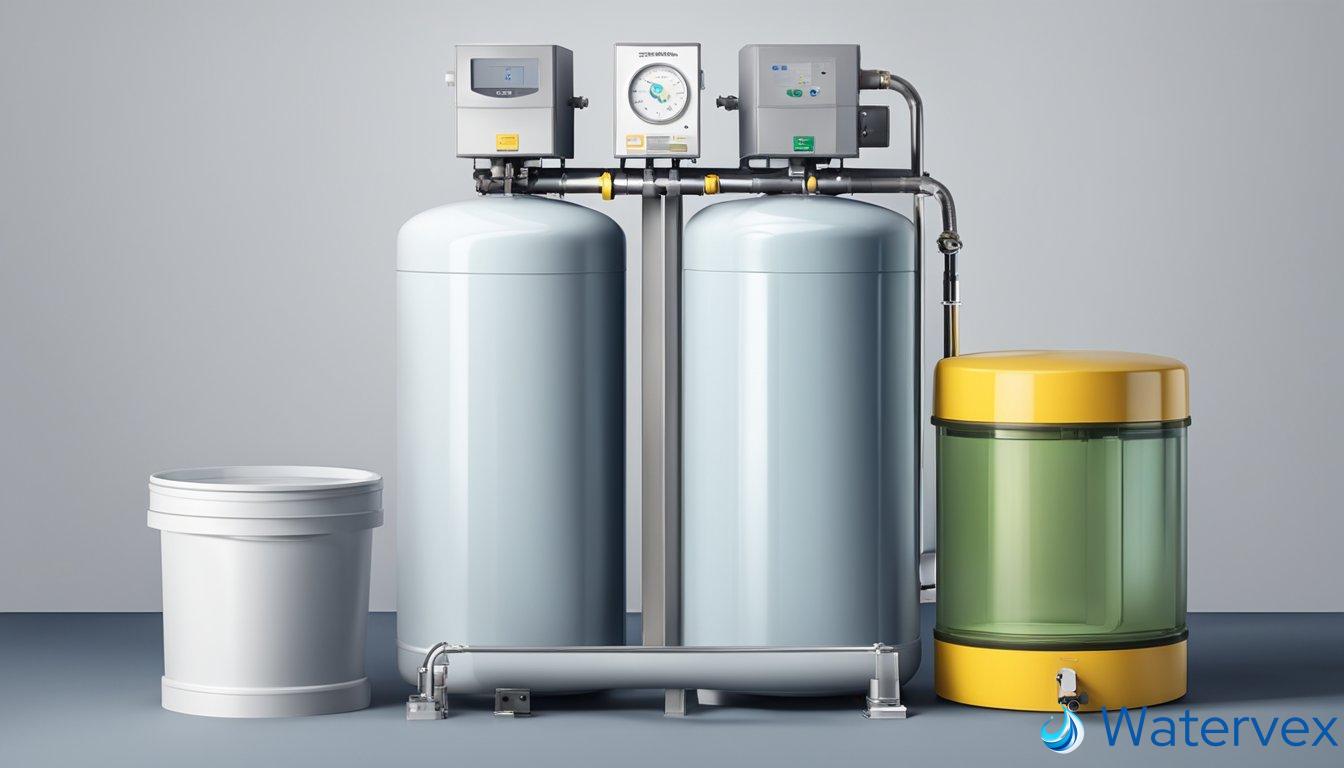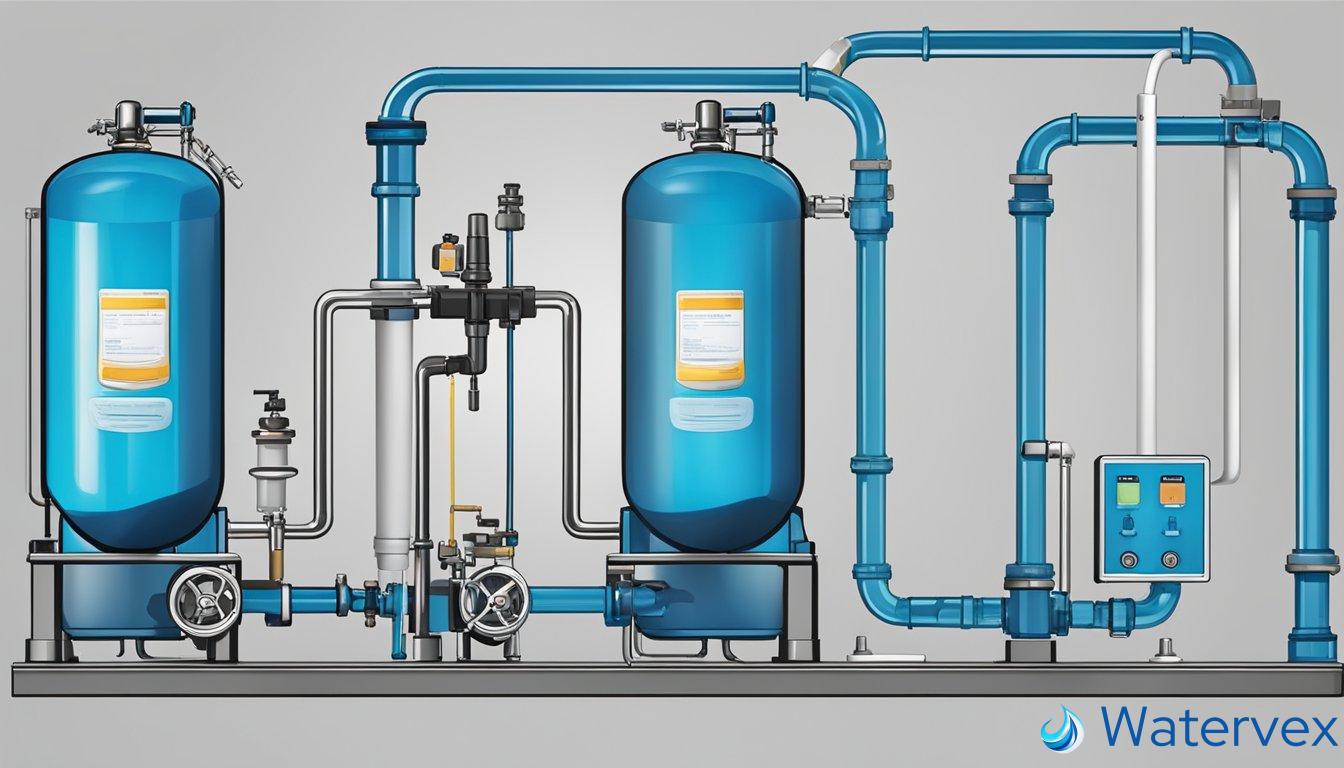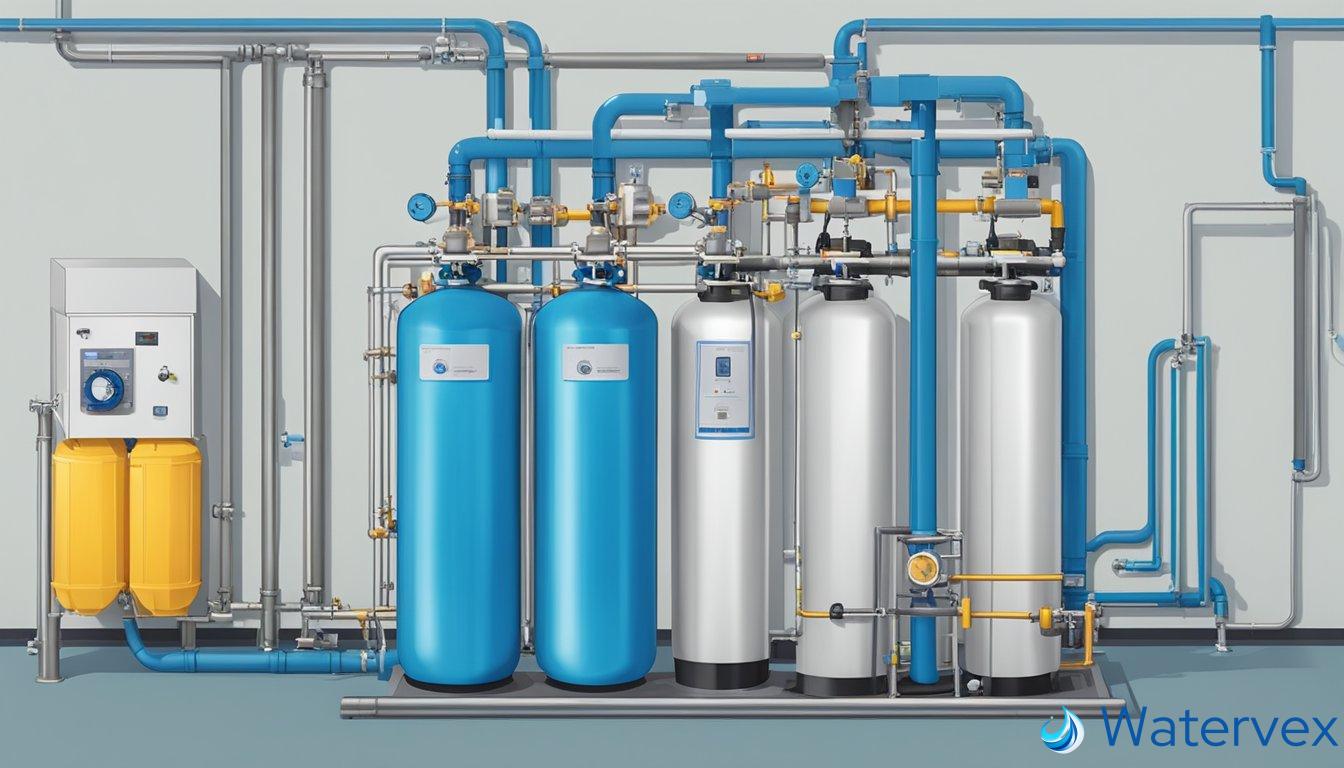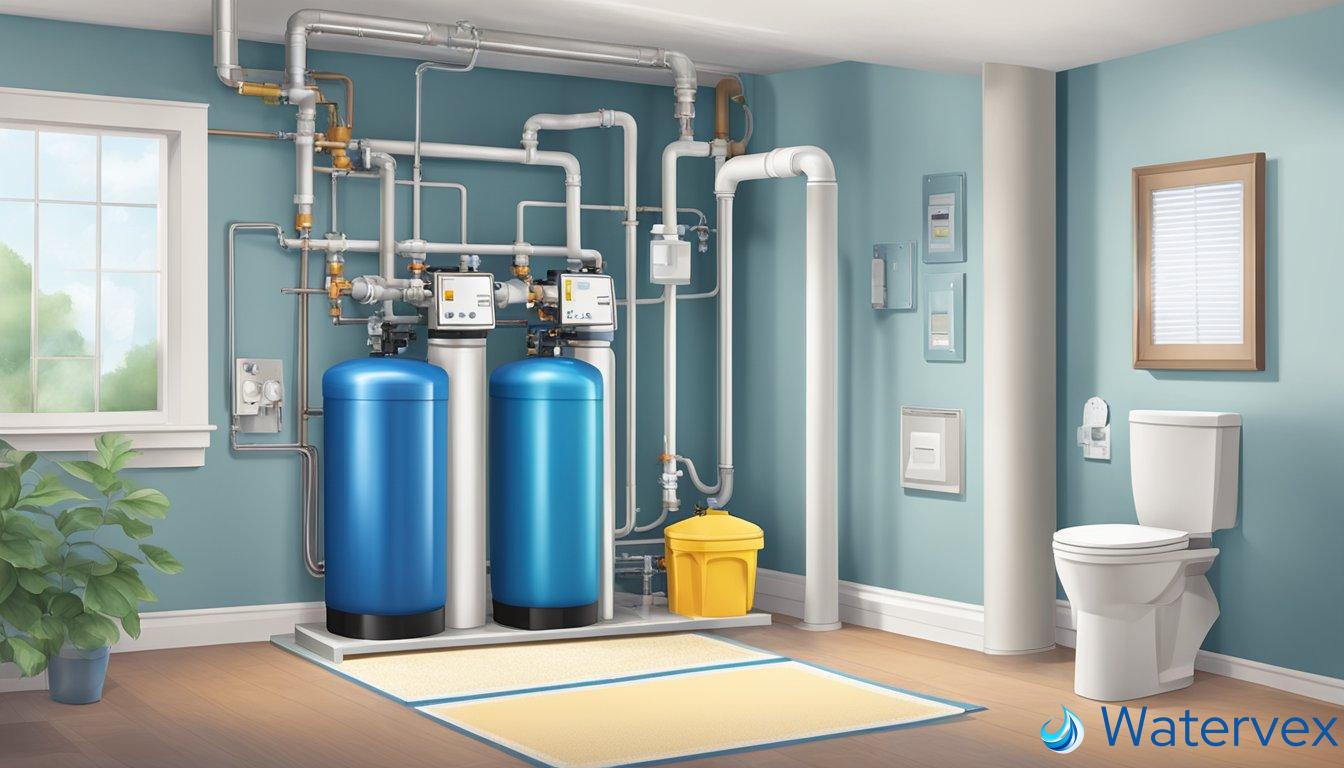Understanding how to configure your water treatment system is crucial to ensure the longevity of your appliances and the safety of your home water supply. When considering the installation of a water softener and an acid neutralizer, the sequence of these systems plays a pivotal role in optimizing their efficiency and protecting your plumbing. Knowing whether to install a water softener before or after an acid neutralizer depends on various factors, including your water’s specific chemistry.

Determining the correct order of installation is not only important for maintaining the health of your water fixtures but also for maximizing the lifespan of the treatment systems themselves. The acid neutralizer is designed to address issues with water acidity by increasing the pH, which can be quite corrosive and damaging to pipes and appliances. In contrast, a water softener removes minerals like calcium and magnesium that cause hardness in water—a separate issue that can lead to scale buildup and reduce the efficiency of your home’s water heaters and other appliances.
Key Takeaways
- Optimal water system configuration enhances appliance longevity and water safety.
- System installation order should be informed by detailed analysis of water chemistry.
- Each water treatment solution serves a distinct purpose, addressing different water quality issues.
Which Should Be Installed First: Water Softener or Acid Neutralizer?
Understanding the sequence in installing a water softener and an acid neutralizer is crucial for the effectiveness of your water treatment system. The placement affects each system’s efficiency and longevity, and impacts the overall water quality in your home.
What Are the Benefits of Proper Water Treatment Sequence?
Optimal performance: Getting the sequence right means each system can perform at its best. A properly sequenced treatment system ensures that the pH level is balanced before the water softener does its job, promoting efficient removal of minerals like calcium and magnesium that cause hardness.
Enhanced equipment lifespan: When sequenced correctly, the acid neutralizer can prevent corrosive water from reaching the water softener, which helps prevent damage to the resin beads inside the softener. This not only extends the life of the water softener but also protects the pipes and water heaters from acidity damage.
When Is It Appropriate to Place a Water Softener Before an Acid Neutralizer?
In specific scenarios, the water softener might be placed before an acid neutralizer:
Minimal sediment: If your water is largely free from sediment, a softener can be installed first. Sediment-free water ensures that the softener works efficiently without any pre-filtered materials clogging the system.
Iron presence: When iron is significant in your water, a softener first may act as a pre-filter to remove it, as softened water can enhance the effectiveness of a calcite neutralizer that follows.
Remember, if you’re debating the order of installation for your water treatment components, consider the unique characteristics of your water supply—like its pH level and the presence of chemical contaminants or minerals. Installing a water softener before an acid neutralizer may be beneficial under certain conditions, but ensuring the water is pre-treated for iron or sediment will generally enhance the function and longevity of your system.
Understanding Your Water’s Chemistry

To optimize your water treatment system, understanding the chemistry of your water is crucial. When considering installing a water softener and an acid neutralizer, knowing pH levels and hardness is vital.
Raw water with a low pH is acidic and can lead to pipe corrosion, which might introduce metals like iron and copper into your water. To counter this, a calcite neutralizer can be used, increasing pH by adding dissolved calcium carbonate back into the water. This process neutralizes the acidity, which should be done before the water softening process to protect the softener’s resin.
On the other hand, hard water is filled with minerals like calcium and magnesium that cause scale buildup. A water softener addresses this by swapping these hard ions with sodium or potassium ions. However, softening does not necessarily adjust the pH.
Balancing your water involves a two-step approach: first, adjust the pH with a neutralizer if necessary, then address hardness. This ensures that your drinking water is not only safe but also protects your household pipes and appliances.
Maintaining both neutralizer and softener requires regular checks. Monitor the flow rate to ensure efficient operation, and replace filter media as per the manufacturer’s guidance.
To briefly illustrate:
- Acidic water (low pH): Risks corrosion. Use a calcite neutralizer.
- Hard water: Causes scale. Use a water softener.
- Ideal order: Neutralize then soften.
Both systems, the neutralizer and softener, demand consistent maintenance to perform optimally. For instance, replenishing the calcite in an acid neutralizer or salt in a softener is essential.
Remember, the goal is to provide water that’s not just safe to drink but also kind to your pipes and appliances. With proper understanding and treatment, harnessing high-quality water in your home becomes a less daunting task.
Installation and Maintenance of Water Treatment Systems

When you install a water treatment system, placing the water softener before or after an acid neutralizer matters for the protection of your pipes and the efficiency of the treatment. If you’re faced with acidic water, installing an acid neutralizer first can prevent potential damage to the water softener from corrosive water. Conversely, for homes with high levels of hardness minerals, a water softener installed upstream can protect acid neutralizers from scale buildup.
Acid neutralizers commonly use materials such as calcite or calcite-blend media—including Flomag or magnesium oxide—to increase pH. It’s crucial that neutralizer tanks are filled enough (usually two-thirds) and are backwashed periodically to avoid a pressure drop and maintain efficiency. You can check the pH levels yourself both before and after the neutralizer filter to ensure the system works as intended.
Maintenance of water softeners mainly involves checking the salt levels and replenishing when low. Depending on the scores of water-using appliances you have at home, including hot water heaters, maintaining optimal function is pivotal to maximize their lifespan.
Here’s a brief guide to help you keep track:
| Task | Acid Neutralizer | Water Softener |
|---|---|---|
| Routine Checkup | pH levels | Salt levels |
| Frequency of Maintenance Checks | Every 6 months | Monthly |
| Media Replacement | As needed/Every 2-3 years | As needed |
| Common Issues | Low pH still after treatment | Insufficient salt recharge |
Whether you’re aiming to guard against corrosion in commercial plumbing work or simply ensuring efficient and safe home water use, proper installation followed by routine maintenance is your pathway to water quality peace of mind. Remember to also secure support from professionals when dealing with sophisticated water treatment systems to enhance their durability and functionality.
Health Implications and Environmental Considerations

When deciding whether to install a water softener before or after an acid neutralizer, you should consider the potential health implications and environmental factors. Hard water that has a high concentration of minerals can contribute to the accumulation of lead and zinc in your pipes, which may end up in your drinking water. This is particularly concerning for children, as these contaminants can lead to memory problems. For adults, prolonged exposure could increase risks of high blood pressure, stroke, and even cancer.
Water softeners typically replace minerals like calcium and magnesium with sodium, which can alleviate these concerns, but they may introduce high levels of sodium into your water supply. This excess, in turn, can cause health issues such as hypertension. Moreover, when a water softener regenerates, it releases the captured contaminants into the environment, which can contribute to issues like acid rainfall and the spread of airborne pollutants.
The environmental impact extends beyond the water supply. Sodium-rich runoff from homes can lead to runoff from mining and decomposition of plant materials, ultimately affecting local ecosystems. For those of you in areas prone to these pollutants, the choice of a water softening system and its position relative to an acid neutralizer becomes even more crucial.
| Potential Contaminants | Health Risks | Environmental Impact |
|---|---|---|
| Lead, Zinc | Memory problems in kids; High blood pressure in adults | Runoff contributing to pollution |
| Sodium (from softeners) | Hypertension; Increased risk of heart conditions | Soil degradation; Adverse effects on plant life |
To mitigate these issues:
- Consider installing your water softener after the acid neutralizer to not only protect your pipes but also to diminish the likelihood of mineral-related health risks before the water reaches your tap.
- Opt for a water softening system that uses a lower amount of sodium or alternative methods to manage hardness without negatively impacting the environment.
Your choice in this matter should prioritize both your family’s well-being and the health of the planet you inhabit.

